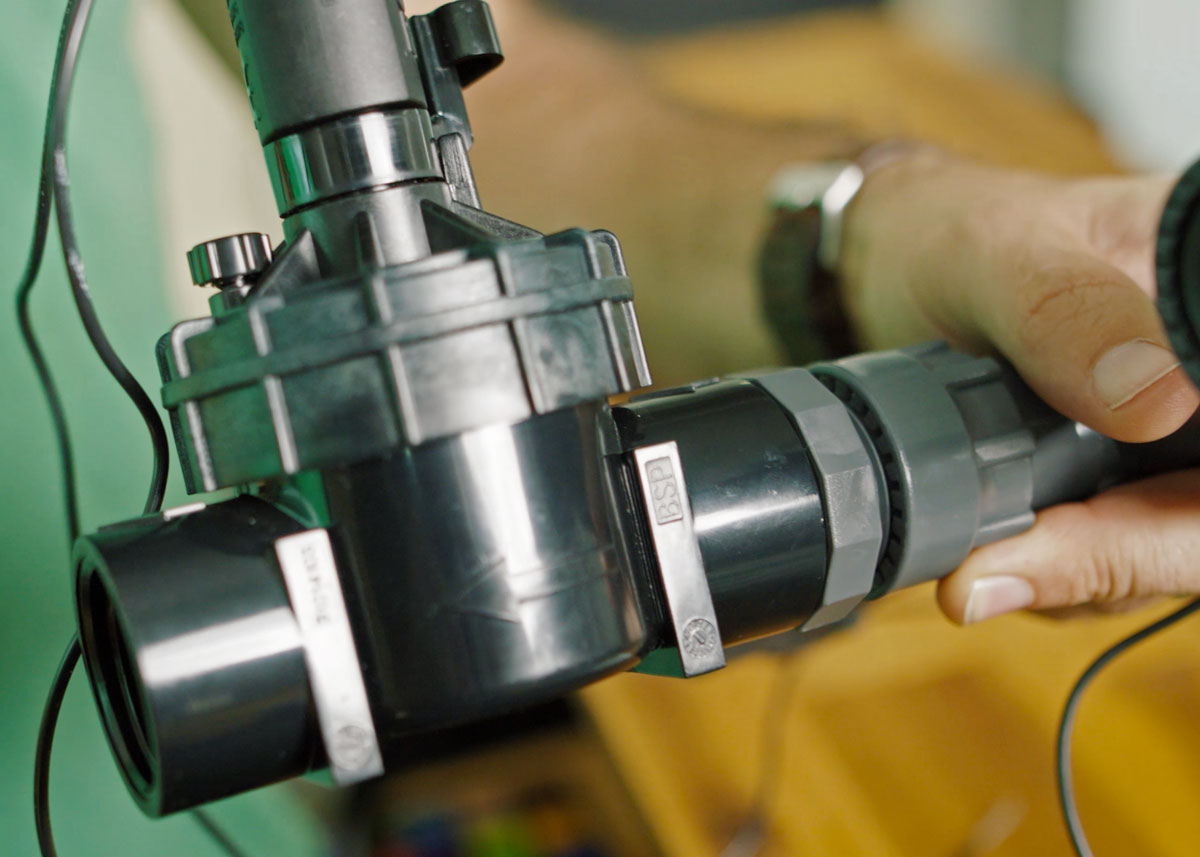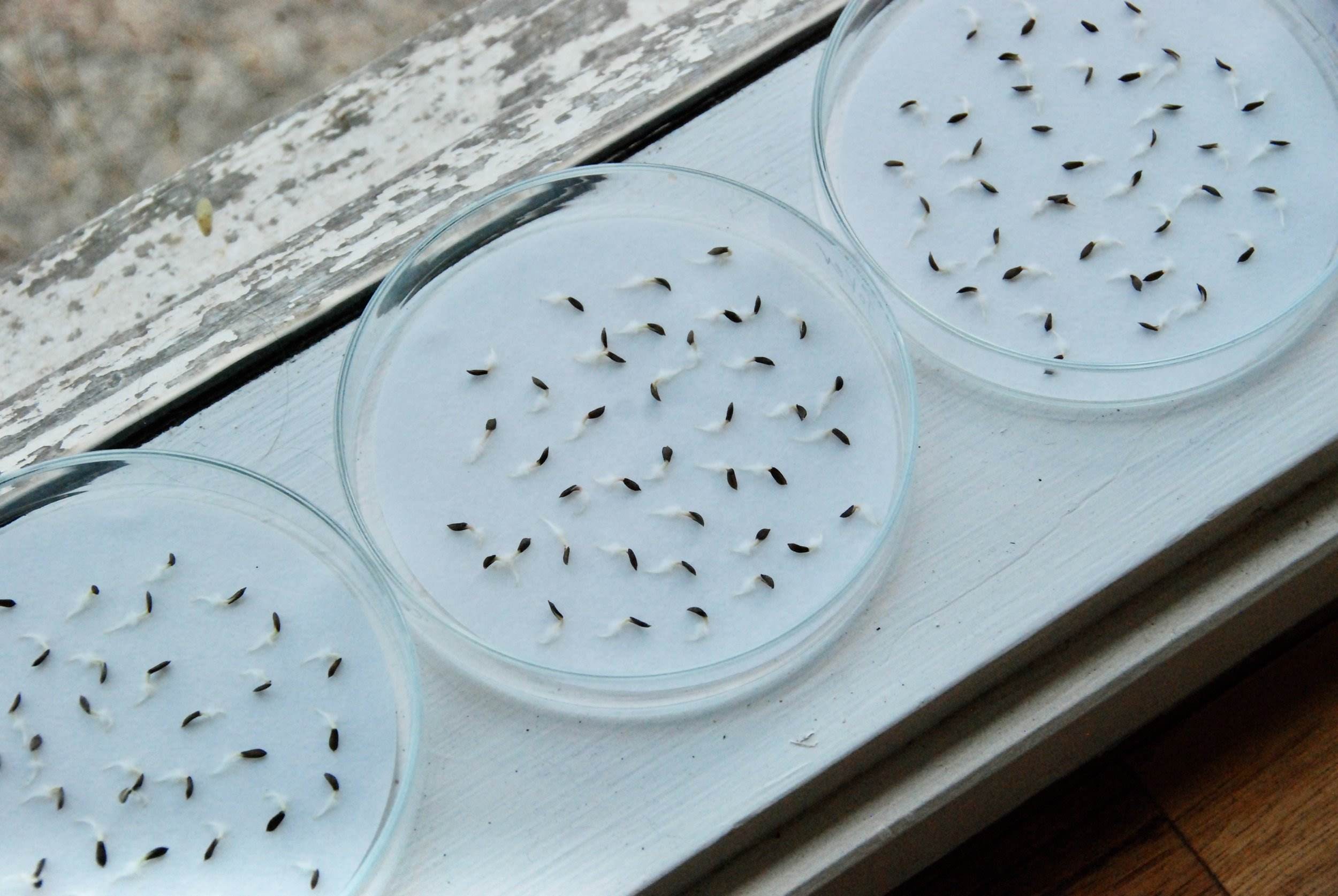Home>Gardening Tips and Tricks>Problem Solving>How To Test For Soil Compaction


Problem Solving
How To Test For Soil Compaction
Published: February 13, 2024
Learn how to solve soil compaction problems with our step-by-step guide. Test for soil compaction and improve your gardening results.
(Many of the links in this article redirect to a specific reviewed product. Your purchase of these products through affiliate links helps to generate commission for Chicagolandgardening.com, at no extra cost. Learn more)
Table of Contents
- Introduction
- Why Test for Soil Compaction?
- Tools and Equipment Needed for Testing
- Step 1: Selecting the Testing Site
- Step 2: Preparing the Testing Site
- Step 3: Conducting the Compaction Test
- Step 4: Evaluating the Test Results
- Step 5: Interpreting the Compaction Test Results
- Step 6: Taking Measures to Address Soil Compaction
- Conclusion
Introduction
Soil compaction is a common problem that can significantly impact the health and productivity of a garden, lawn, or agricultural field. Compacted soil restricts root growth, reduces water infiltration and drainage, and limits the availability of nutrients for plants. Over time, this can lead to poor plant growth, increased susceptibility to diseases and pests, and decreased overall yield.
Testing for soil compaction is an essential step in understanding the condition of the soil and determining the appropriate measures to address the issue. By assessing the compaction level, gardeners, landscapers, and farmers can make informed decisions on soil management practices, such as aeration, amendment application, and cultivation techniques.
In this article, we will guide you through the process of testing for soil compaction. We will discuss the tools and equipment needed, the steps involved in conducting the test, and how to interpret and evaluate the results. By following these guidelines, you will be able to identify and address soil compaction issues effectively, leading to healthier and more productive soil.
Why Test for Soil Compaction?
Testing for soil compaction is crucial for several reasons. By understanding the compaction level of your soil, you can tailor your soil management practices to improve its health and overall productivity. Here are some key reasons why testing for soil compaction is essential:
- Identify Soil Health Issues: Soil compaction can lead to a range of issues, including poor drainage, decreased water-holding capacity, and reduced aeration. By testing for compaction, you can pinpoint areas where these problems exist and take appropriate measures to address them.
- Optimize Plant Growth: Compacted soil restricts root development and makes it difficult for plants to access essential nutrients. By testing the soil, you can identify areas with high compaction, enabling you to implement strategies like deep tilling or the addition of organic matter to promote root growth and enhance overall plant health and productivity.
- Prevent Yield Loss: Soil compaction can significantly impact crop yields. It limits the ability of plants to establish a strong root system, resulting in reduced nutrient uptake and water availability. Testing for compaction allows you to proactively address these issues, leading to better crop performance and yield.
- Enhance Water Management: Compacted soil has limited water infiltration and drainage capabilities, leading to runoff, erosion, and waterlogged conditions. By testing for compaction, you can identify areas prone to these problems and implement practices like aeration, contour plowing, or the installation of drainage systems to improve water management in your soil.
- Promote Soil Sustainability: Regularly testing for soil compaction enables you to assess the effectiveness of your soil management practices over time. By monitoring changes in compaction levels, you can evaluate the success of your interventions and make necessary adjustments to ensure long-term soil sustainability.
By testing for soil compaction, you can gain valuable insights into the health and condition of your soil. This knowledge empowers you to implement targeted strategies to improve soil structure, enhance plant growth, and maximize productivity. The next section will guide you through the tools and equipment needed for conducting a soil compaction test.
Tools and Equipment Needed for Testing
Before conducting a soil compaction test, it is important to gather the necessary tools and equipment. These items will enable you to accurately measure and assess the compaction level of your soil. Here are the essential tools you will need:
- Soil Probe or Penetrometer: A soil probe or penetrometer is used to measure the resistance of the soil to penetration. It provides a quantitative measure of the compaction level. Soil probes come in various forms, such as handheld devices or cone-shaped tools. Choose a probe that is suitable for the size and type of soil you are testing.
- Measuring Tape or Ruler: Measuring tape or a ruler is essential for marking the testing site and measuring the depth of soil penetration. It allows you to record accurate measurements of compaction levels at different depths within the soil profile.
- Sampling Tools: Sampling tools, such as a shovel or spade, are needed to collect soil samples for further analysis. These tools should be clean and free from any contaminants to ensure accurate soil sample collection.
- Container or Bag: A container or bag is necessary for storing the soil samples collected during the testing process. Make sure the container is clean and labeled with appropriate identification details for each sample.
- Notebook and Pen: A notebook and pen are crucial for recording observations, measurements, and any other relevant data during the testing process. Take detailed notes to ensure accurate documentation for future reference and analysis.
- Protective Gear: Depending on the testing site and conditions, it may be necessary to wear protective gear, such as gloves, safety glasses, or a mask, to ensure personal safety and prevent contamination of soil samples.
Having the right tools and equipment for soil compaction testing is essential to obtain accurate results and make informed decisions about soil management practices. Make sure to gather all the necessary items before proceeding with the testing process. The next section will outline the step-by-step process involved in conducting a soil compaction test.
Step 1: Selecting the Testing Site
The first step in testing for soil compaction is selecting an appropriate testing site. Choosing the right location is crucial as it ensures representative results that accurately reflect the overall compaction levels in your soil. Follow these guidelines to select an ideal testing site:
- Random Sampling: Randomly select multiple test sites across the area you want to assess for compaction. This will provide a more comprehensive understanding of the soil condition and help identify any variability in compaction levels.
- Consider Different Land Uses: If you have different land uses within your property, such as a garden, lawn, or agricultural field, select test sites in each area. Different land uses can have varying compaction levels based on usage patterns and management practices.
- Representative Areas: Choose test sites that represent the overall characteristics of the soil you want to assess. Consider factors such as soil type, slope, and vegetation cover to ensure a representative sample.
- Avoid Obstacles: Avoid areas with large obstructions such as rocks, tree roots, or debris that may interfere with the penetration of the testing tools. These obstacles can affect the accuracy of the test results.
- Multiple Depths: Select testing sites at different depths within the soil profile. Compaction levels can vary at different depths, so testing at multiple depths will provide a more comprehensive picture of soil compaction.
- Record Site Information: Before conducting the test, record relevant information about the selected testing site, including its location, land use, and any observed characteristics. This information will help in interpreting the test results and understanding the factors contributing to soil compaction.
By following these guidelines, you can confidently select testing sites that will provide accurate and representative results for assessing soil compaction. Once you have selected the testing site, you can proceed to the next step, which involves preparing the site for testing.
Step 2: Preparing the Testing Site
After selecting the testing site for soil compaction assessment, the next step is to prepare the site for testing. Proper preparation ensures accurate measurements and minimizes any potential factors that could affect the test results. Follow these steps to prepare the testing site:
- Clear Vegetation: Remove any vegetation covering the selected testing site. This includes grass, weeds, or any other plants that may interfere with the test measurements.
- Remove Debris: Clear the area of any debris, rocks, or other objects that could hinder the penetration of the testing tools. Clearing the site allows for unobstructed access and accurate measurements.
- Level the Surface: Ensure that the surface of the testing site is level. Any unevenness or slopes can introduce variables that may impact the test results. You can use a rake or shovel to level the surface if needed.
- Moisture Content: Assess the moisture content of the soil at the testing site. Soil compaction can be influenced by soil moisture, so it is important to test under similar moisture conditions. If the soil is too dry, consider irrigating the site to achieve optimal moisture levels.
- Mark Testing Points: Using a measuring tape or ruler, mark the testing points within the testing site. These points will indicate where to conduct the compaction tests. Spread them out evenly across the site to ensure representative sampling.
- Record Site Preparation: Document any relevant information about the site preparation process, such as the date, weather conditions, and any observed factors that could influence the test results. This information will help analyze the testing data in context.
Properly preparing the testing site sets the stage for accurate measurements and ensures that the test results reflect the true condition of the soil. Once the site is prepared, you can move on to the next step, which involves conducting the actual compaction test.
Step 3: Conducting the Compaction Test
Once the testing site has been prepared, it is time to conduct the compaction test. This step involves measuring the resistance of the soil to penetration, which will provide valuable insights into the compaction levels. Follow these steps to conduct the compaction test:
- Position the Testing Tool: Position the soil probe or penetrometer vertically at the first marked testing point. Make sure the probe is perpendicular to the ground surface to ensure accurate measurements.
- Apply Steady Pressure: Apply steady downward pressure on the testing tool to penetrate the soil. Slowly and evenly push the probe into the ground until you meet resistance. This resistance indicates the compactness of the soil.
- Measure Penetration Depth: Once you encounter resistance, use a measuring tape or ruler to measure the penetration depth of the testing tool. Record this measurement as the compaction level at that specific depth.
- Repeat the Test: Repeat the test at the remaining marked testing points within the site. Ensure consistency in the angle and pressure applied during each test to obtain accurate and comparable results.
- Take Multiple Readings: To increase the accuracy of the test, take multiple readings at each testing point, especially if the soil compaction varies within the site. This will provide a more comprehensive understanding of the compaction levels.
- Record Test Data: Record the readings from each test, including the penetration depth and any additional observations. These recordings will serve as the basis for evaluating and interpreting the compaction test results.
By following these steps, you can conduct a compaction test to measure the resistance of the soil to penetration accurately. Remember to take consistent measurements and record all test data for further analysis. The next step will guide you through interpreting and evaluating the compaction test results.
Step 4: Evaluating the Test Results
After conducting the compaction test, it is time to evaluate the results. This step involves analyzing the data collected from the test to determine the compaction level of the soil. Follow these guidelines to effectively evaluate the test results:
- Review the Measurements: Start by reviewing the recorded measurements from each test point. Identify any patterns or trends in the penetration depths to get an overview of the overall compaction levels within the testing site.
- Compare with Ideal Soil Depth: Compare the measured penetration depths with the ideal soil depth for the specific plant or crop you are growing. This will help you assess if the soil compaction is within the desired range or if corrective measures need to be taken.
- Consider Moisture Content: Take into account the moisture content of the soil during the compaction test. Wet soils tend to have higher compaction levels than dry soils. Adjust your evaluation based on the moisture conditions present during the test.
- Identify High Compaction Areas: Identify areas within the testing site that exhibit consistently deeper penetration depths or greater resistance to the testing tool. These areas indicate higher levels of soil compaction and may require targeted interventions.
- Assess Variability: Evaluate the variability in compaction levels across the testing site. If there is a wide range of penetration depths, it suggests varying compaction levels within the soil. Consider addressing these variations through site-specific soil management practices.
- Document Findings: Document your findings and interpretations of the compaction test results. This record will serve as a reference for future assessments and comparisons as you implement soil management practices to address the compaction issue.
Evaluating the test results is a crucial step in understanding the compaction levels within your soil. By analyzing the data collected, you can make informed decisions about the appropriate measures to address the soil compaction issue. The next step will guide you through interpreting the compaction test results in more detail.
Step 5: Interpreting the Compaction Test Results
Interpreting the compaction test results is a critical step in understanding the condition of the soil and determining the necessary actions to address any identified compaction issues. Here are the key factors to consider when interpreting the compaction test results:
- Penetration Depth: The penetration depth measurements indicate the level of compaction at different depths within the soil profile. Longer penetration depths generally indicate less compaction, while shorter depths suggest a higher degree of compaction.
- Ideal Soil Depth: Compare the measured penetration depths with the ideal soil depth for the specific plants or crops you are growing. If the measured depths fall within the recommended range, the soil compaction is considered acceptable. However, if the depths are below the ideal range, it indicates the need for soil improvement measures.
- Uniformity of Compaction: Evaluate the uniformity of compaction across the testing site. Uneven compaction levels may indicate localized factors like heavy traffic, construction activities, or specific soil characteristics. Address areas with consistently higher compaction levels as they may require focused remediation efforts.
- Moisture Conditions: Consider the moisture content of the soil during the compaction test. Wet soils tend to have higher compaction levels compared to dry soils. Adjust your interpretation accordingly, recognizing that soil compaction may vary with changing moisture conditions.
- Impact on Plant Growth: Assess the potential impact of soil compaction on plant growth and root development. Soil compaction restricts root growth and reduces the availability of water, nutrients, and oxygen to plants. Higher compaction levels may negatively affect plant growth, leading to decreased yield and overall productivity.
- Rooting Depth: Soil compaction can also impact the depth at which plant roots can penetrate and establish themselves. Shallow root systems can limit the plant’s ability to access nutrients and water, making them more susceptible to stress and less resilient to environmental challenges.
By interpreting the compaction test results, you can gain valuable insights into the state of your soil. This understanding will guide you in implementing appropriate measures to address compaction issues and improve the overall health and productivity of your soil. The next step will guide you through taking measures to address soil compaction effectively.
Step 6: Taking Measures to Address Soil Compaction
Once you have evaluated and interpreted the compaction test results, it’s time to take measures to address soil compaction. By implementing the appropriate strategies, you can improve soil structure, enhance root development, and promote healthier soil conditions. Follow these steps to effectively address soil compaction:
- Aeration: Aeration is a key method for improving soil compaction. It involves creating small holes or channels in the soil to allow for better air circulation, water infiltration, and root penetration. Aerating the soil can be done through mechanical means, such as core aeration or tillage, or through natural methods like earthworm activity.
- Organic Matter Addition: Incorporating organic matter into the soil can help improve its structure and alleviate compaction. Organic matter, such as compost or well-rotted manure, enhances soil fertility, water-holding capacity, and microbial activity. Apply a layer of organic matter and incorporate it into the soil through tillage or mulching.
- Deep Tillage: Deep tillage involves loosening the soil to greater depths, promoting better root penetration and reducing compaction. Use appropriate equipment, such as chisel plows or subsoilers, to break up compacted layers and improve soil structure. However, be cautious not to disturb the soil excessively, as it may disrupt its natural structure.
- Amendment Application: Applying soil amendments like gypsum or lime can help improve soil structure and alleviate compaction. These amendments can help break up clay soils, improve drainage, and enhance root development. Follow recommended application rates and methods based on soil testing and professional advice.
- Contour Farming: If compaction is a recurring issue on sloped areas, implement contour farming practices. This involves plowing and planting crops parallel to the slope, which helps to prevent water runoff and soil erosion. By reducing erosion, you can mitigate the effects of compaction and promote better soil health.
- Implement Crop Rotation: Crop rotation can help alleviate soil compaction by optimizing root growth and nutrient uptake. Different plant species have varying root systems that can penetrate different soil depths, reducing compaction and improving soil structure. Rotate crops with contrasting root systems to break up compacted layers.
By following these steps and implementing the appropriate measures, you can effectively address soil compaction and improve the overall health and productivity of your soil. Remember, managing and preventing soil compaction is an ongoing process, so continue to monitor and evaluate the effectiveness of your interventions over time.
Conclusion
Testing for soil compaction is an essential step in maintaining and improving the health of your soil. By conducting a compaction test, you can accurately assess the degree of compaction, identify problematic areas, and implement targeted measures to address the issue. The results of the compaction test provide valuable insights into the soil’s condition, allowing you to make informed decisions about soil management practices.
In this article, we outlined the step-by-step process of testing for soil compaction. We discussed the importance of testing, the tools and equipment needed, and how to select a suitable testing site. We also covered how to prepare the site, conduct the compaction test, and evaluate and interpret the test results. Finally, we provided measures that can be taken to address soil compaction effectively.
By following these guidelines, you can improve soil structure, enhance root development, and promote healthier soil conditions. Addressing soil compaction not only improves plant growth and productivity but also contributes to the long-term sustainability of your soil.
Remember, soil compaction is an ongoing challenge, and it is important to incorporate preventive measures in your soil management practices. Regularly monitoring and testing for compaction, implementing appropriate measures, and adjusting your approach based on the results will help maintain optimal soil health and productivity.
So take the necessary steps to test for and address soil compaction, and enjoy the benefits of healthier, more productive soil for your garden, lawn, or agricultural field.




